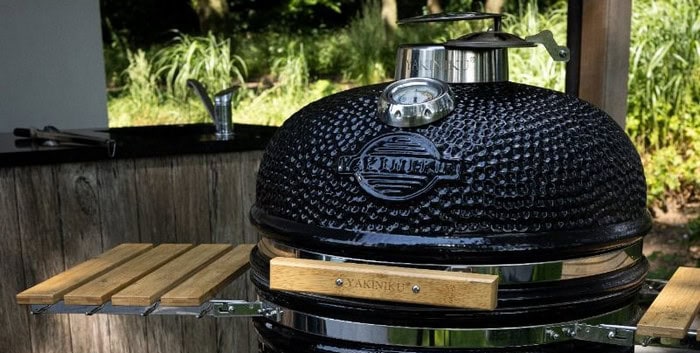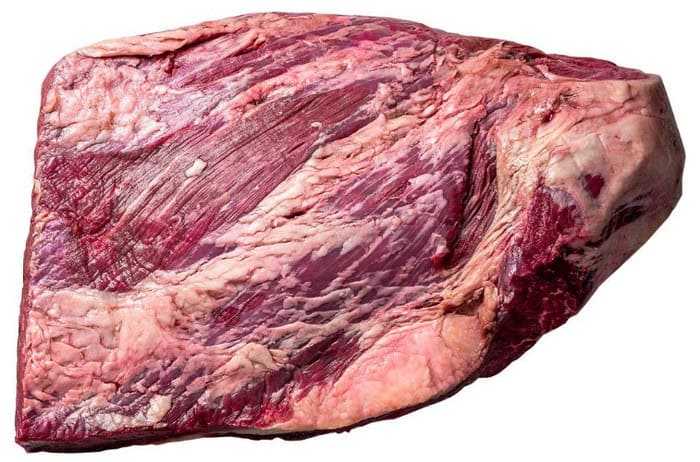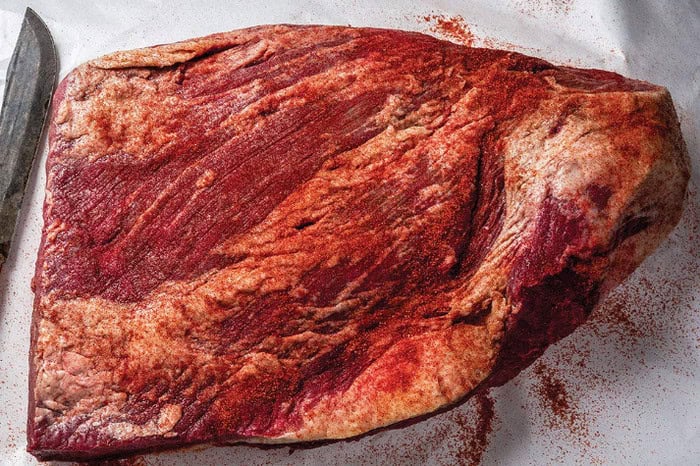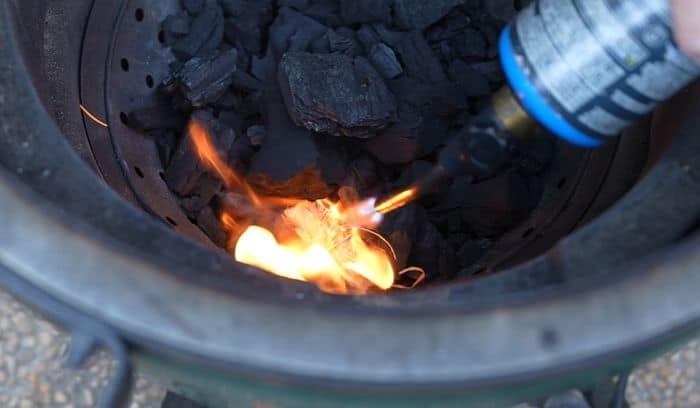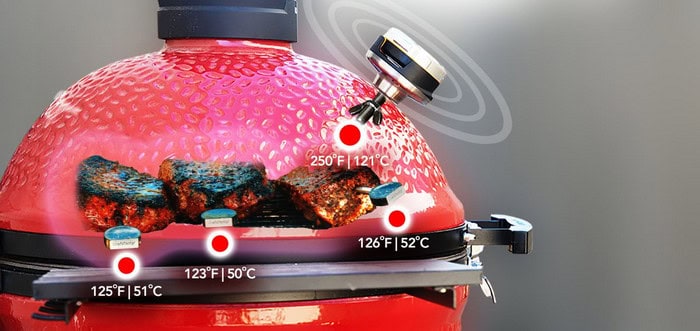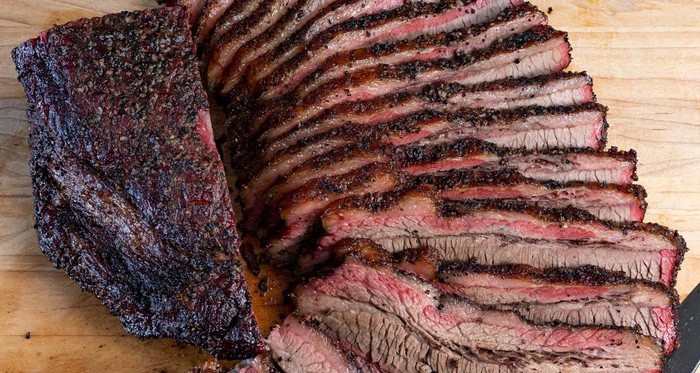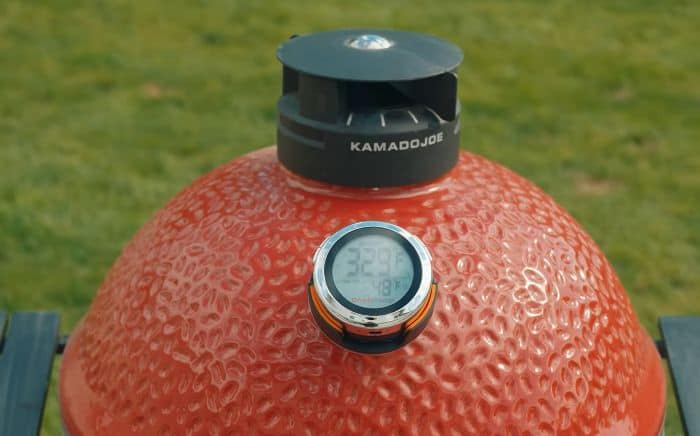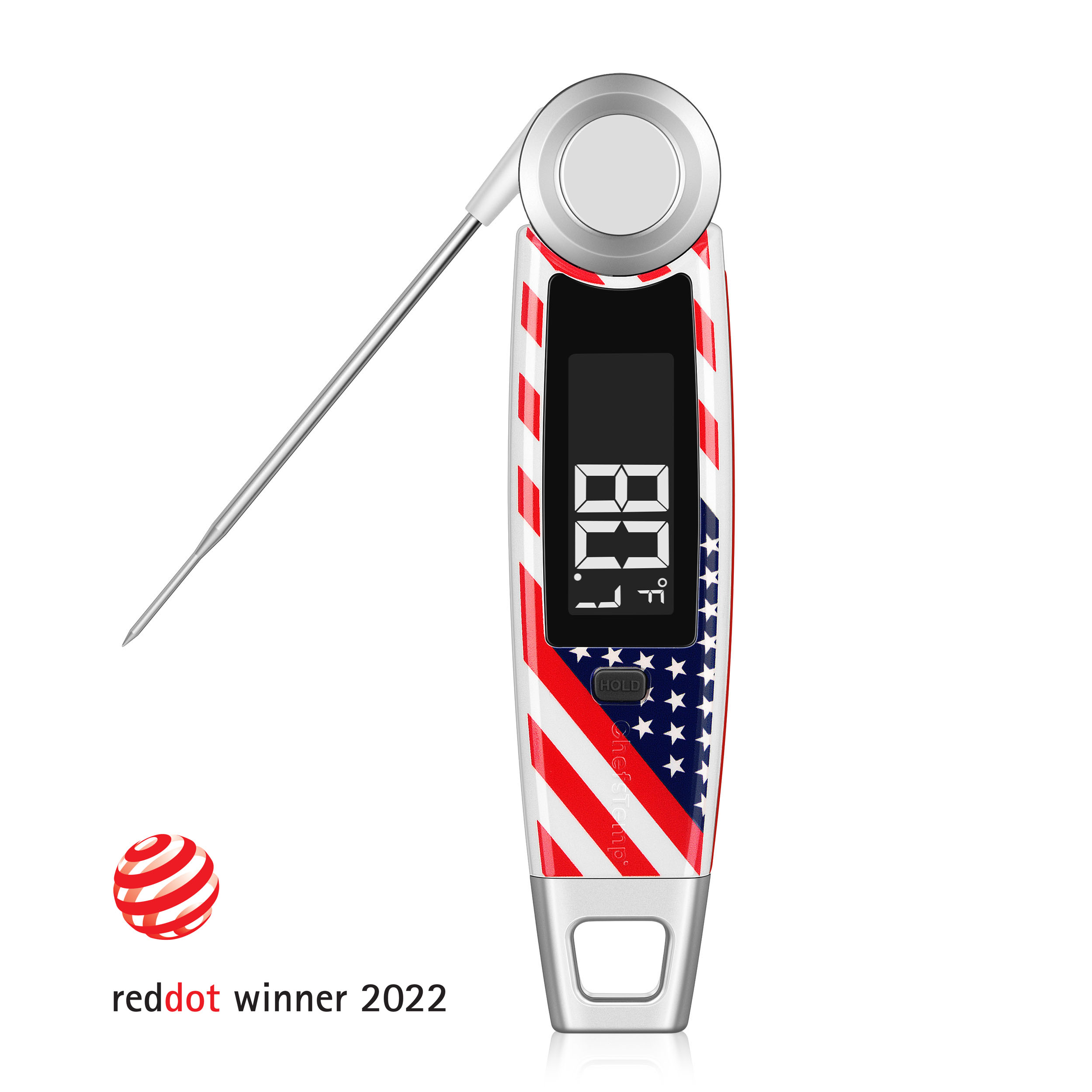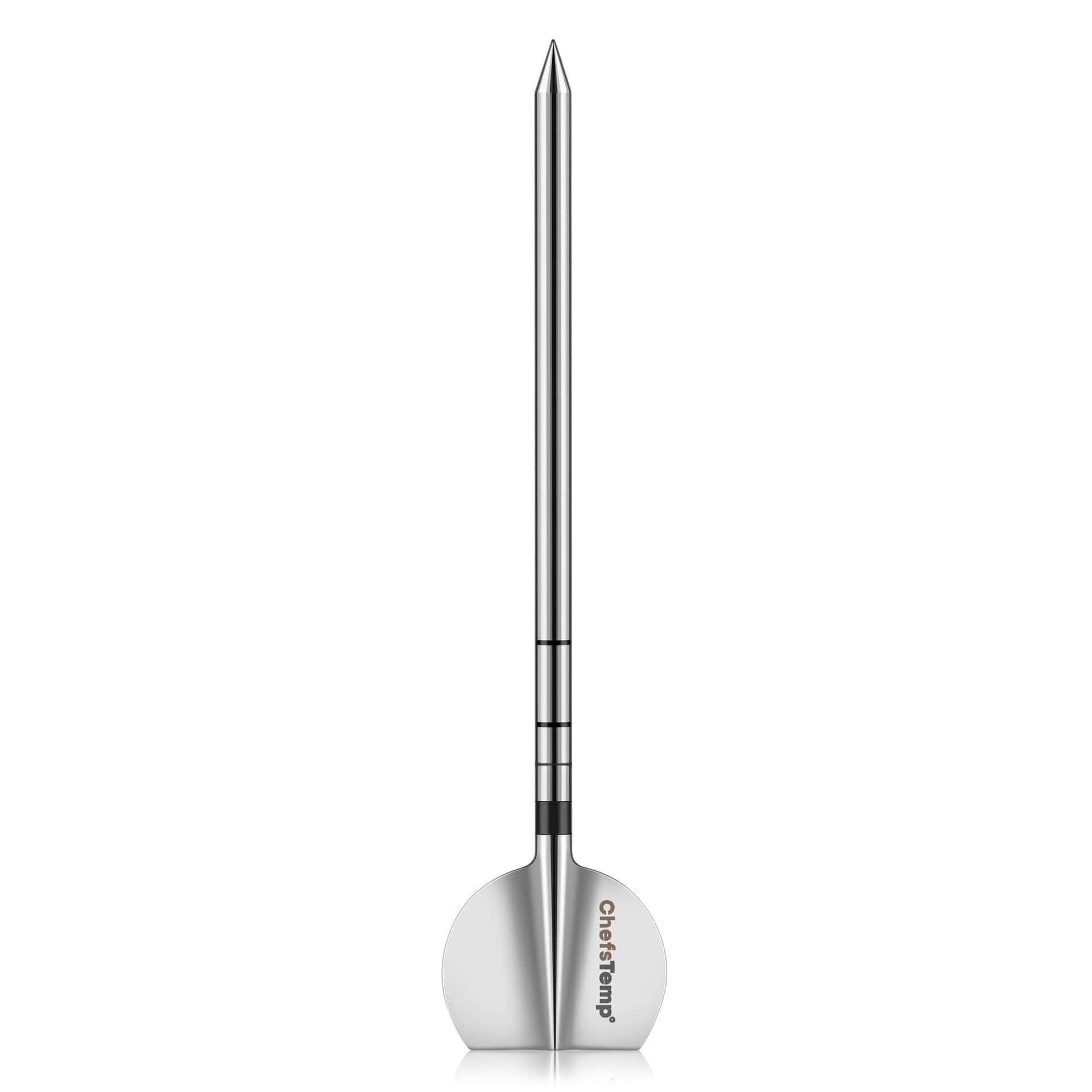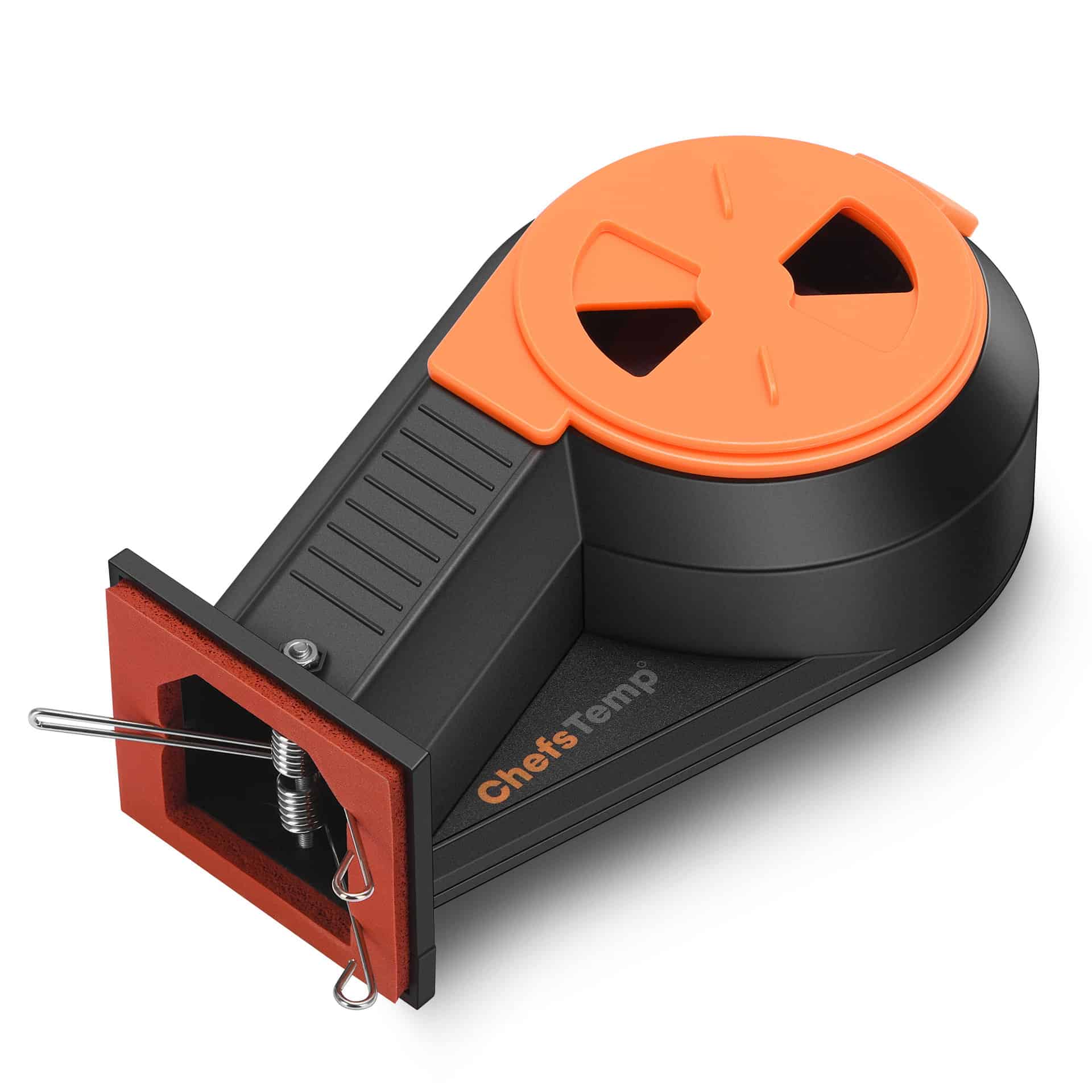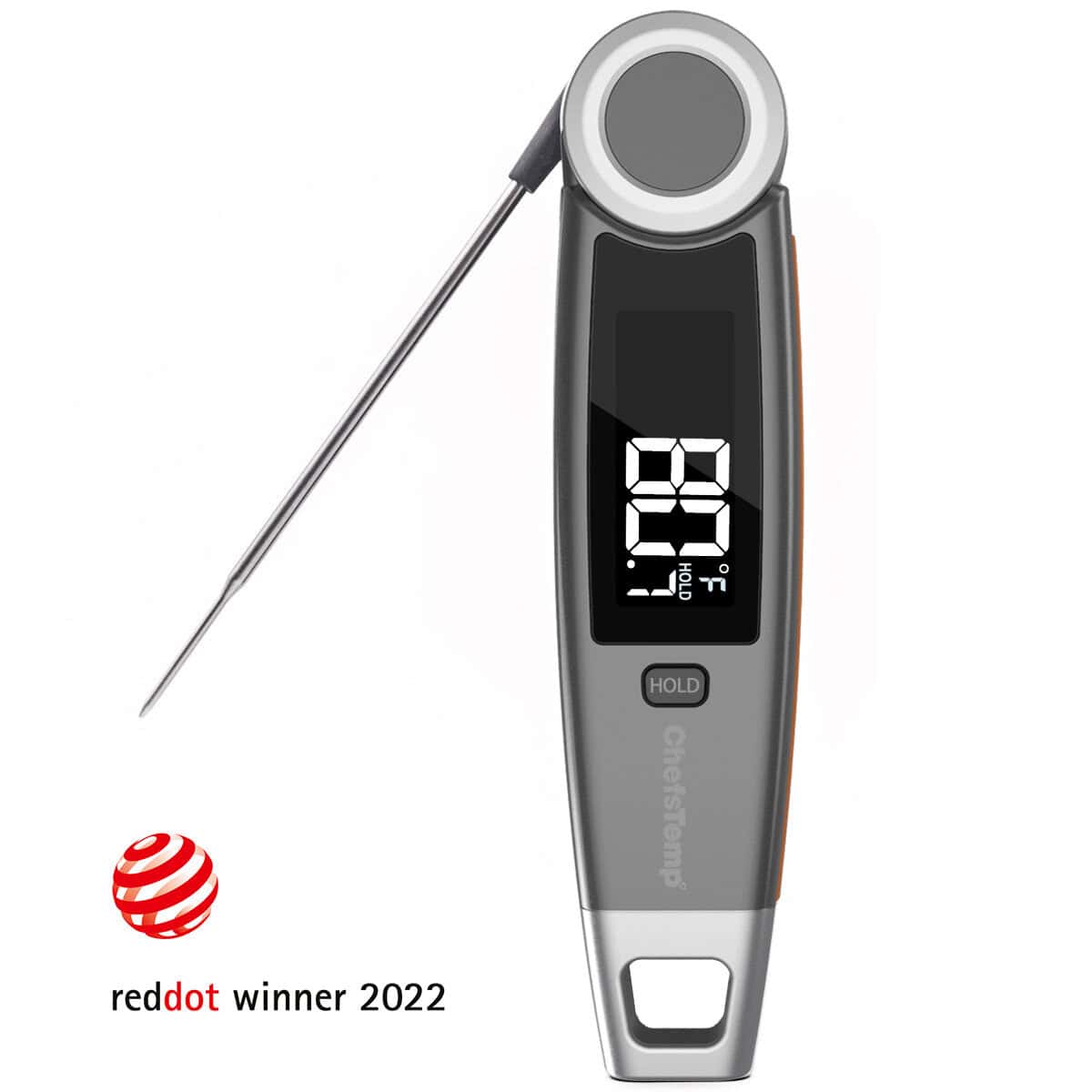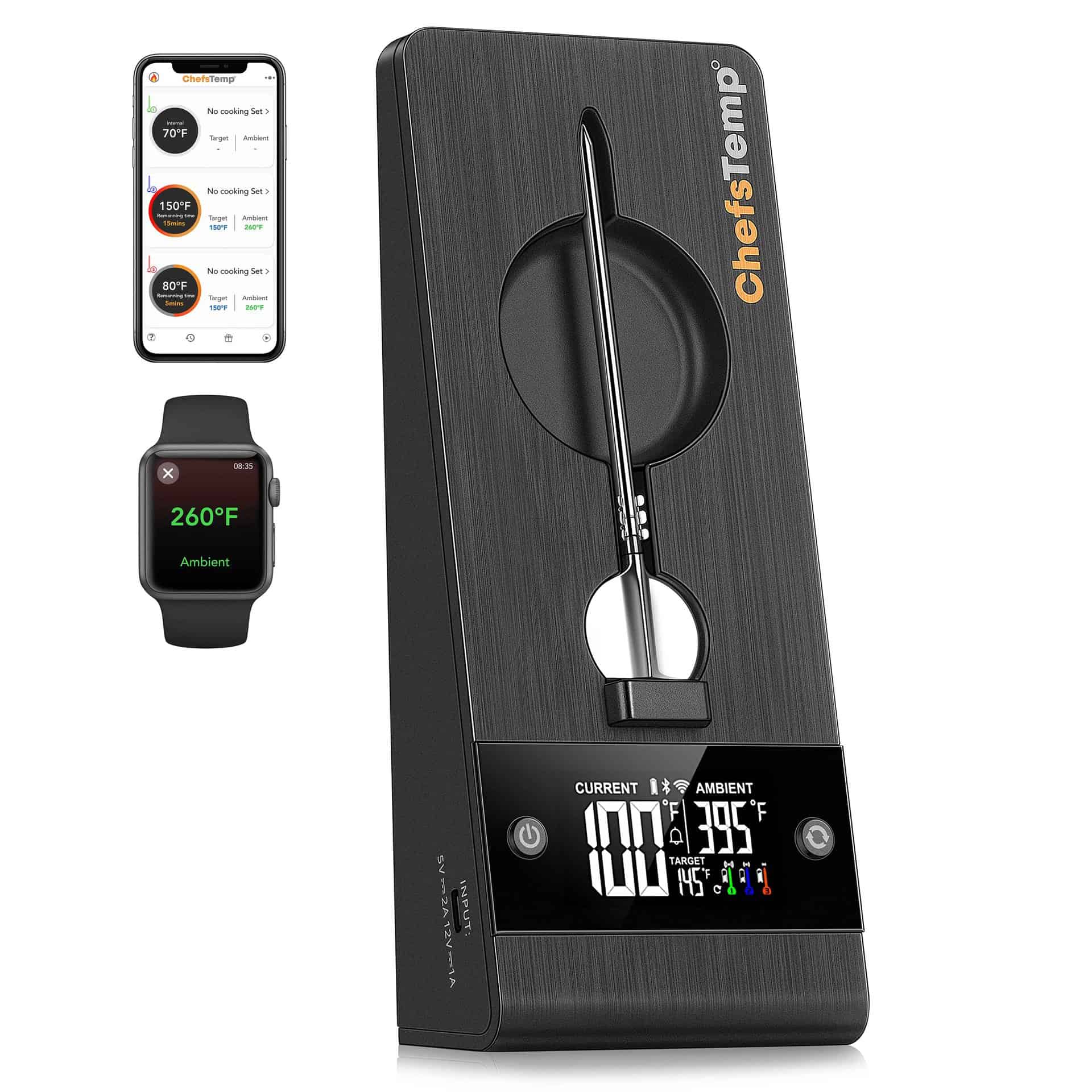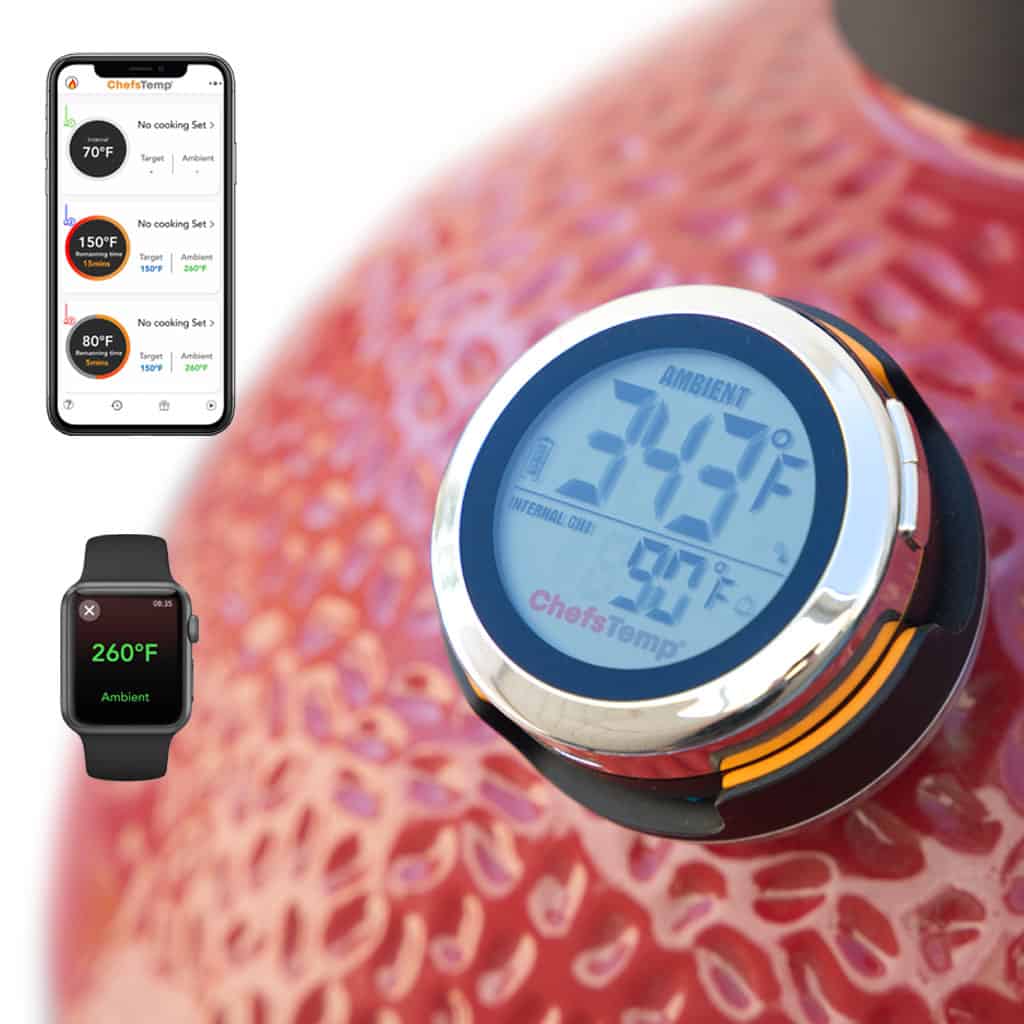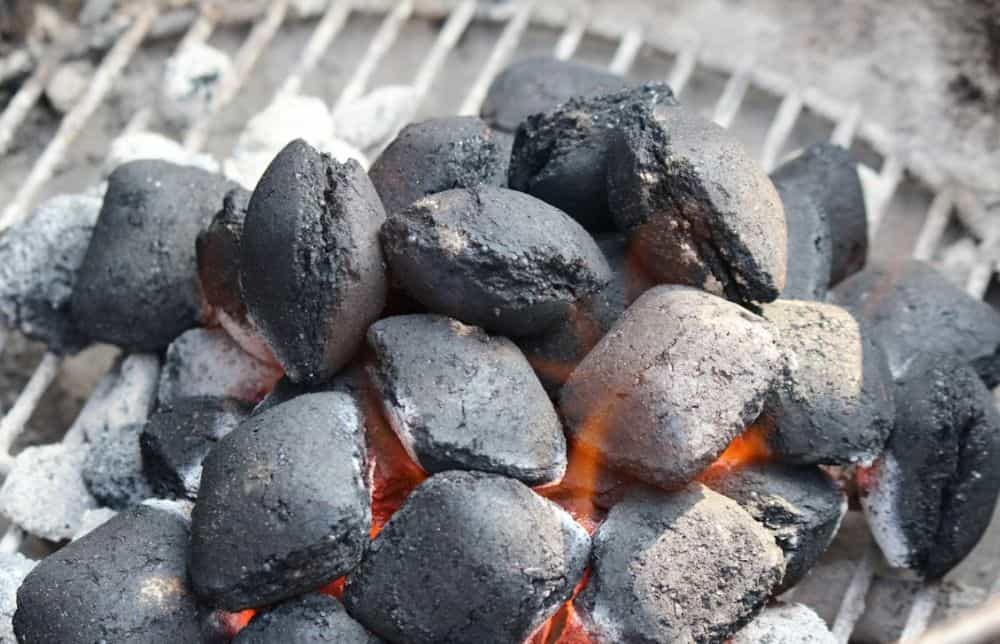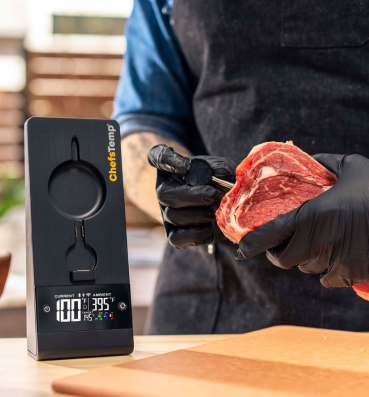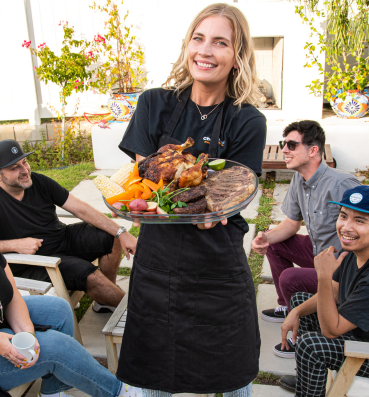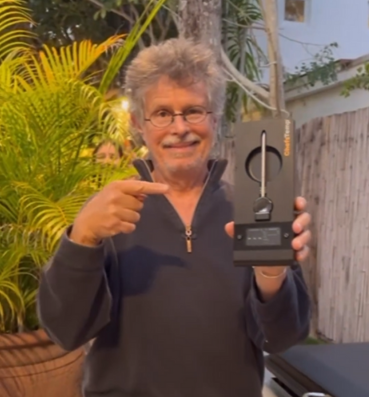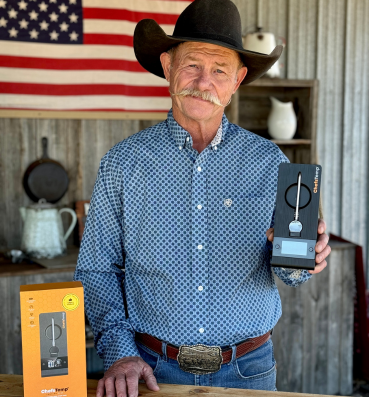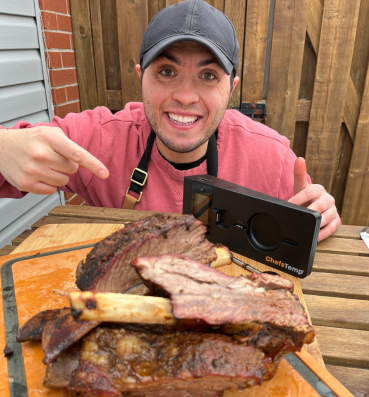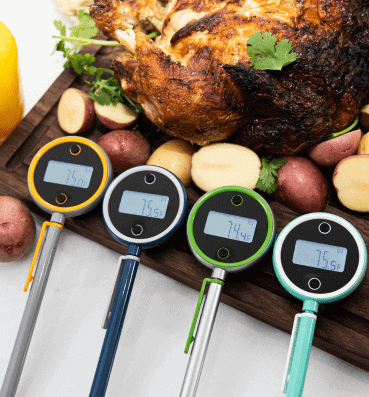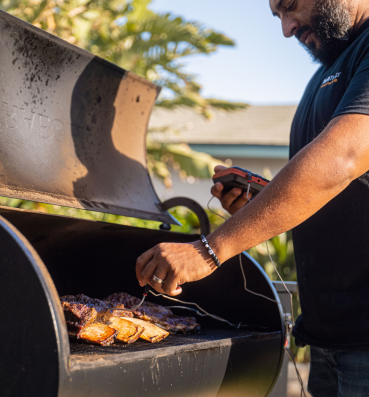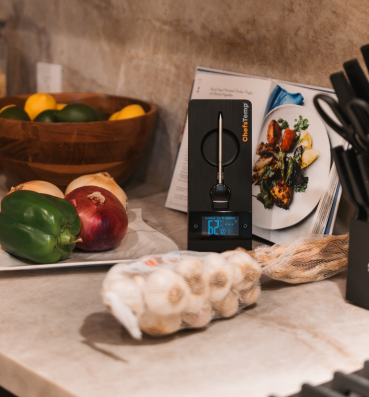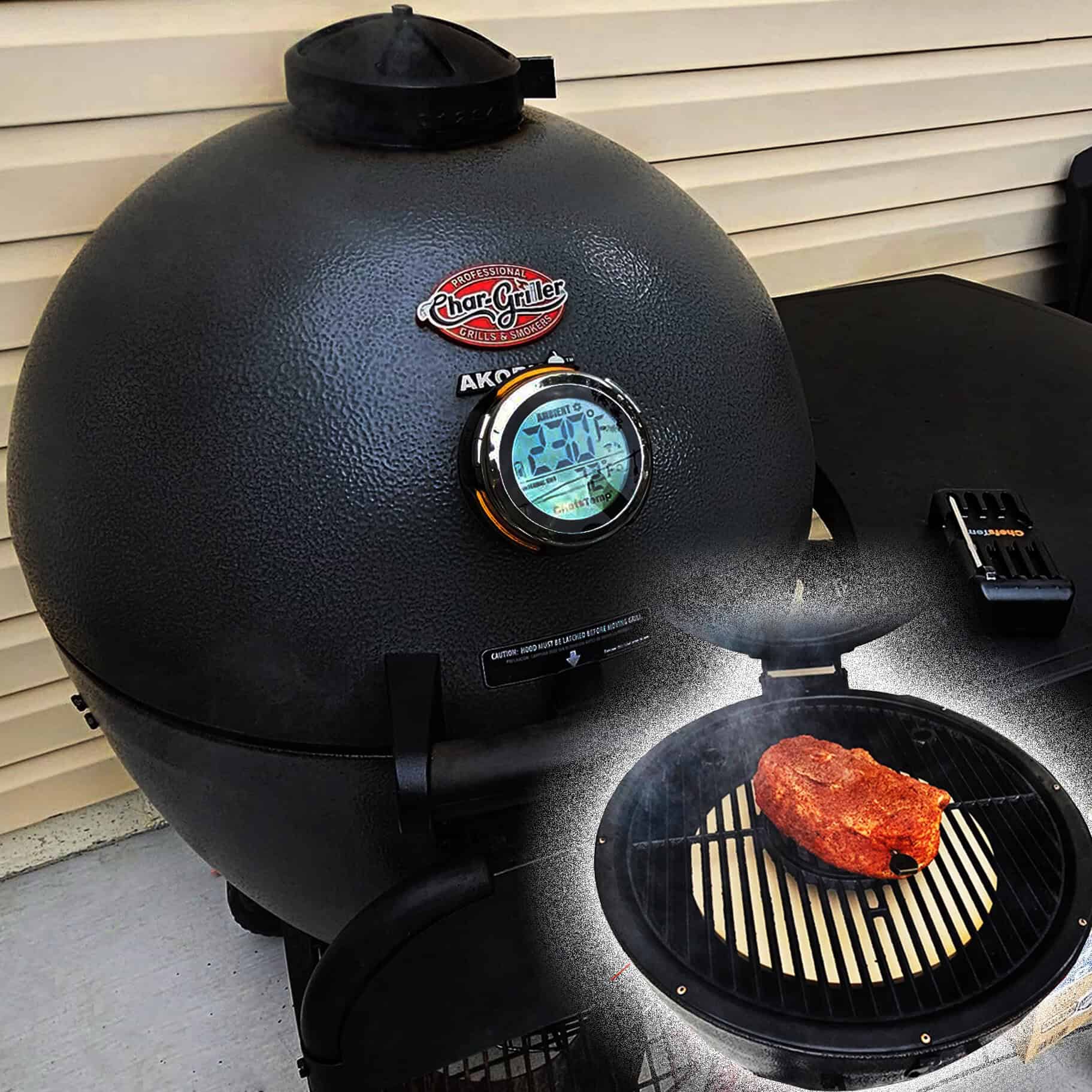
How to Cook Brisket on a Kamado Grill with a Thermometer Upgrade
Any grilling expert knows that mastering the cooking of a brisket on a Kamado grill takes years of trial and error. Even if you’ve smoked plenty of meat before, cooking a brisket is boss level. Depending on how it comes out, it could either break your heart or earn you bragging rights. This guide shows you the best Kamado accessories to guarantee you get the latter result.
Table of Contents
How to Cook Brisket on a Kamado Grill
Follow this step-by-step guide to learn how to cook brisket perfectly on a Kamado grill. Later on, find out about the best Kamado grill upgrade to ensure you can consistently achieve the best brisket.
Step 1: Choosing the Brisket
Timing and temperature control are critical to cooking the best brisket. However, the quality of the meat also plays a role. Set yourself up for success by selecting the highest-quality brisket.
Choose a brisket with good marbling. You want to see visible streaks of fat (marbling) on the meat because these represent the intramuscular fat that will melt during the cooking process. As the fat melts, it enhances the flavor and juiciness of the meat. Steer clear of briskets that are too lean, as they may end up dry once cooked.
Additionally, opt for a more flexible cut. It also means the cut has a good fat distribution, ensuring tender meat through the low-and-slow cooking process.
When purchasing, look for the USDA seal. Choose a Prime or Choice grade cut. Prime cuts have more marbling, which is best for grilling and smoking. Choice is a more affordable alternative, offering good-quality brisket at a lower cost.
Next, consider the fat cap. Make sure the brisket’s fat cap is approximately a quarter of an inch thick. If there’s too much fat, it won’t be as smoky. However, if there isn’t enough fat, it can be dry. Be sure to trim off any excess fat from the brisket as well.
Lastly, choose a brisket cut with even thickness. It allows for consistent cooking on the Kamado grill.
Step 2: Preparing the Brisket
Once you have selected and trimmed the brisket, it’s time to season!
Use a dry rub made with salt, pepper, and your favorite spices. Coat the brisket with the seasoning blend thoroughly and massage it onto the meat to allow the flavor to seep into the meat. Most grilling pros use an injection to boost flavor and make the meat tender. However, you can skip this one as long as you let the seasoning blend marinade for the recommended time frame.
Once seasoned, let the brisket sit at room temperature for 30 to 45 minutes before grilling.
Step 3: Set Up the Kamado Grill
Choose a lump charcoal for the Kamado grill. This charcoal type burns hotter, which is ideal for low and slow cooking.
Next, place a heat deflector, such as a pizza stone or plate setter. Using indirect heat is important when cooking brisket on the Kamado grill. It ensures that no single part of your brisket cooks faster than the rest.
At this point, work on stabilizing the temperature inside the grill. It should maintain a steady range of 225 to 250 degrees F. Since the Kamado grill effectively retains heat, you can gradually adjust the vents so it reaches the desired temperature faster.
Step 4: Smoking and Cooking Process
Use a wireless thermometer like the ProTemp S1. It is made with platinum sensors for higher sensitivity and more stable readings than traditional thermometers that use NTC sensors. It also has a long stem so it can read close to the cooking surface, providing you with more accurate readings.
Verify that the temperature reading is accurate before closing the lid.
Step 5: Low and Slow Cooking
If you prefer, you can spritz the brisket with an apple cider vinegar mixture to prevent it from drying out. And once you’ve reached 150 to 165 degrees F, it’s what is referred to as the stall. You must wrap the brisket in foil to accelerate the cooking process and lock in moisture on the meat.
From the app on your phone, you should closely monitor the temperature readings. It should be ready once the meat reaches 195 to 203 degrees F.
Don’t slice the brisket right away. Let it sit for an hour without removing the foil. Sitting the meat redistributes the juices and keeps it tender.
Mastering the Art of Low and Slow Cooking
There are two critical elements for the perfect brisket: time and temperature. If you know how to master these two, then you can expect the most tender, juicy brisket.
Few moments in grilling rival the satisfaction of cutting that first slice of brisket. The meat is so tender that it falls apart, and every bite is filled with smoky goodness. Cooking with the low-and-slow method is the secret to cooking the perfect brisket, and the Kamado grill is made for that.
Thanks to the Kamado grill’s insulation and temperature precision, it becomes easier than ever to cook BBQ and brisket with consistency. It helps lock in moisture so the meat remains juicy and never dry.
Mastering the “low and slow” cooking method does not happen overnight, though. You need the best grill accessories to achieve precision and accuracy in temperature.
Low and slow cooking means cooking meat for an extended period at a range of 225-275 degrees F (107-135 degrees C). Using low heat helps to dissolve the meat’s connective tissues. It also provides a smokiness as the flavor can penetrate into the meat and creates a wonderful, slightly charred bark.
The ceramic Kamado grill is built for the low and slow cooking method. Its insulation capabilities allow it to maintain its temperature for longer periods of time without consistently adding charcoal or fuel.
Temperature control is also crucial in cooking the perfect brisket. Always start low. It is easier to raise the temperature when needed later on in the cooking process. Add a few coals until you’ve reached the desired temperature. If you add too many at the start, it could overshoot your target and make it hard to bring it back down.
Temperature monitoring will be important throughout the cooking process. Grill accessories, such as a wireless meat thermometer, is useful for this. Platinum sensors in the ProTemp S1 offer better stability and higher accuracy across a wider range of temperature, even up to 1000 degrees F. Also, this model offers temperature compensation to ensure that external factors won’t affect your reading, so you don’t end up with overcooked or undercooked brisket.
- Accurate Temperature Control
Wireless thermometers provide accurate and real-time readings. That’s why platinum sensors are the new standard for high-precision settings, which includes grilling meat in a low and slow method. Otherwise, you’re just waiting for the brisket to dry out, which also means you lose the flavor.
- No Need to Open the Lid
A wireless meat thermometer prevents such problems by allowing you to monitor temperature readings without having to open the lid. You can even do your errands or entertain friends as the WiFi or Bluetooth connectivity allows you to track down the temperature from your device. You can even monitor the cooking of different meats simultaneously.
- Prevent Guesswork
Cooking brisket is a science. You need the right temperature and time. Relying on visual cues alone won’t result in a consistently perfect brisket every time. Getting the exact temperature readings with a wireless thermometer is the only way you’d know that the brisket is done.
- Consistent Results
Brisket requires precision. You can track every stage of the cooking process with a wireless thermometer. It ensures you can achieve repeatable results because you know the correct temperature to aim for, and you have the tool to measure it accurately.
Once you master these temperature variations and your grill’s behavior, you can expect more consistent results. You must also embrace patience. Trust that you’ve invested in the best meat and Kamado Joe accessories and the results will follow.
Don’t despair if you don’t perfect your brisket the first time. Mastering the art of cooking a brisket requires a mastery of the grill, its temperature, and the ability to control the variables. With the right thermometer upgrade, you can tackle these challenges with better precision every single time.
Discover Other ChefsTemp Products
Discover more recipes and learn kitchen tricks by joining our cooking family on Facebook.
You may also like:
